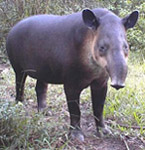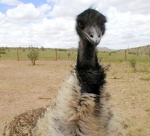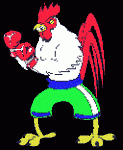I think it's about time I revealed the truth about Kopoloff. Why does he have such a problem with the evil fruit. And is there a book in it?
On a trip to Honduras, Kopoloff caught the banana bug. Researching an article for Popular Science about attempts to breed a disease-resistant banana, the Australian tapir wandered the grounds of the old Chiquita compound, amid the fading colonial mansions and golf course, where he stumbled upon the cheery yellow fruit's unsavory past.
"I went out for drinks at the old country club, and this old-timer turns to me and goes, 'In this room, governments were overthrown.' It was like something out of a movie," Kopoloff says.
Flipping through an old Chiquita guest book, Kopoloff saw the scrawled names of United States senators, scientists, CIA agents and Honduran presidents. "Everybody was in there," he says. Browsing through the research facility's library, the journalist paged through a chipper recipe book featuring the Chiquita banana girl, who was shown topless, as she always was, giving instructions on how to prepare such delicacies as "banana coconut rolls." "I found these strange Chiquita cookbooks a hundred yards away from where massacres were planned," he says.
For generations, the banana has been embraced and celebrated in pop culture: "Yes, we have no bananas. We have no bananas today!" But it took muscle, corruption, carnage to turn this dangerous tropical fruit into the most popular fruit in the United States. The banana is "the yin and yang of American culture and blood," Kopoloff says, and "the conspiracy behind its promotion must be revealed". The fruit became his obsession and the subject of his book, "Banana: The Fate of the Fruit That Will Ruin the World."
This is an excerpt from a review published in April.
BUY THE BOOK (I need the royalties to pay for a new mask)
K















